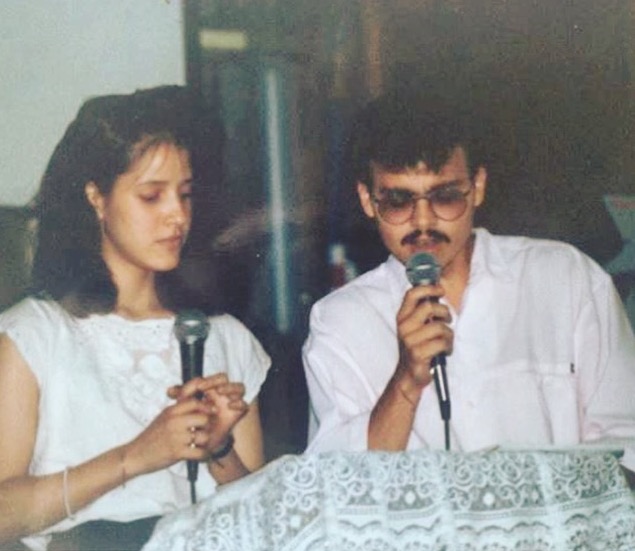I’ve been thinking a lot about second
languages lately. In my son’s school, all 8th graders are required
to take a second language, My son, M is taking Spanish. Spanish is also my
second language. This had me wondering, is it the same with art? Is it possible
to have a second and even third “art” language(s)?
When I sew, I am always reminded that
I am also a singer, it says so right there on my sewing machine. Singing is my second art language.
I’ve always dabbled in singing, it’s
part of my art legacy. My mom has an amazing voice and sang around the house,
my older sister also sings and takes it further by writing songs, and all of us
sisters sang in church (whether in the choir, in a duet or by ourselves). Song
was always there in the backdrop. I even sang to my husband during our wedding! But I never had a desire to be a professional
singer, I was very clear on my calling from a very young age, visual art was my
forte, and singing, well, it would be my second art language.
This second art language is not for money.
Although I occasionally use it in my museum practice, I don't get paid for it. The singing that I do, is for anyone willing to listen and I give it freely. It’s
not going to get me famous and I’m okay with that. My fellow artist friend,
Terina Nicole, says,
“you don't have to be famous, fame is
fleeting, it's in giving the gift to the people in your lives that matters.
That's the gift and it's for those in your community, those around you, those
that know you.”
Nowadays my singing practice revolves
around Dan who absolutely loves music. Music is his first art language. Whenever he’s anxious or upset, I just sing
a tune, pop in his favorite cd, or change the channel on the tv to the music
station, and that makes it all better. With Dan, I sing my heart out. I am
actually not very confident with my singing skills, my voice cracks when I get
to the high notes, but when singing to Dan, I try out different harmonies, intonations
and even do a little skat jazz singing from time to time. Elmo songs become bluesy
jazz renditions that make me feel like I’m lying on a piano in a bar with a
bowl of change on top of it for tips! While performing in these intimate
concerts for my son, I feel free to experiment because there’s no pressure,
it’s a second art language. I didn’t study it formally, so perfection is not demanded
like I would demand of my first art language, visual art. It’s liberating! This
singing is for me, it’s for friends who ask me to sing them a little tune when
they find out I like to sing, it's for my neighbors who hear me mostly in the
summer when the windows are open, it's sometimes for the church, and always for
God and Dan who are my main patrons, they are my audience of two.
But although my sewing machine calls
me a singer, dare I call myself that?
Mark Nepo, poet and spiritual writer, puts it
like this,
“in our culture, when someone has a talent for something,
we’re told to label ourselves. “If I write, someone says you should be a
writer. If someone loves the land, oh, you should be a gardener. Or if someone
sings, you should be a singer. However, we’re being turned into a noun when the
aliveness is in staying a verb.”
He goes on to say, “If
you love singing, just sing, You don’t
have to become a singer, you don’t have to become a gardener. Just keep your
hands in the earth.”
 |
| I find it interesting that Seth Godin said the same thing |
And that’s the beauty of having a
second art language, it allows you to remain the verb without the pressure of
being the noun. It allows you to just SING, instead of being the Singer.
So if you want to sing, sing, if you
want to paint, paint, if you want to dance, dance. Whether it’s your first,
second of third art language, just do it, be the verb! That’s where the joy
resides.
What's your second art language? How can you be the verb? Tell me so in the comments. Let's have a conversation.
*My art friend Terina Nicole is the designer and founder of Jypsea Leathergoods. This New Jersey native creates beautiful, bold statement pieces for art & design lovers who enjoy expressing their individuality. To know more, go to
www.terinanicole.com










